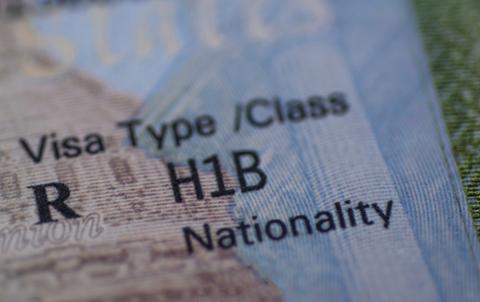How much are software engineers on the H-1B visa making at some of the nation’s largest tech companies? At first glance, the answer seems simple: quite a lot. But there are nuances in the data worth paying attention to.
For the purposes of this exercise, we turned to the H-1B Salary Database, which indexes the Labor Condition Application (LCA) disclosure data from the United States Department of Labor (DOL). We’ve narrowed down the analysis to software engineers before, in October 2019; of course, many things have changed in the interim, so it’s worth updating the data.
For reference, here are the October 2019 numbers:
And here are the July 2020 numbers. As you can see, the Google, Microsoft, and Apple salaries (the three companies for which we can draw a direct comparison) have all increased substantially:
That’s much higher than the “average” technologist salary of $94,000 (according to Dice’s 2020 Tech Salary Report), but it’s roughly on par with what these big technology companies pay their software engineers in general. Here’s a breakdown of entry-level software engineer salaries at some of the biggest, crowdsourced via levels.fyi:
That’s not the whole story, of course. These tech firms subcontract H-1B workers of all specializations from business-services and consulting firms; according to a dataset from the U.S. Department of Labor, for instance, Apple drew in 2,274 H-1B workers off this secondary market in 2019, while Google subcontracted 889. And data suggests that the H-1B workers at these subcontracting firms earn significantly less than their counterparts at other companies: At Accenture, the median H-1B salary of $96,366, while at Tata, it’s $68,000, and at Capgemini, it’s $89,918 (at IBM, which engages in business consulting in addition to its tech business, it’s $86,653).
Once you start peering into this secondary market, determining the median or average salary for various H-1B jobs becomes a lot murkier, despite attempts by the federal government force these companies to reveal more.
Trump’s temporary ban on H-1B visas (which is scheduled to expire at the end of the year, but which could theoretically extend if he wins re-election) may also have a substantial impact on salaries for H-1B workers already in the country, particularly if they truly have a specialized skillset that companies have great trouble sourcing. In theory, an extended ban could also drive tech companies to make more domestic hires.
A re-emphasis on domestic technologists is certainly one of the intentions of the ban. “In the administration of our Nation’s immigration system, we must remain mindful of the impact of foreign workers on the United States labor market, particularly in the current extraordinary environment of high domestic unemployment and depressed demand for labor,” the order states. “Historically, when recovering from economic shocks that cause significant contractions in productivity, recoveries in employment lag behind improvements in economic activity.”
Of course, it will take several quarters to accurately measure the ban’s impact. In the meantime, the largest tech companies seem happy to pay relatively high salaries to their H-1B software engineers—the ones they source directly, at least.



